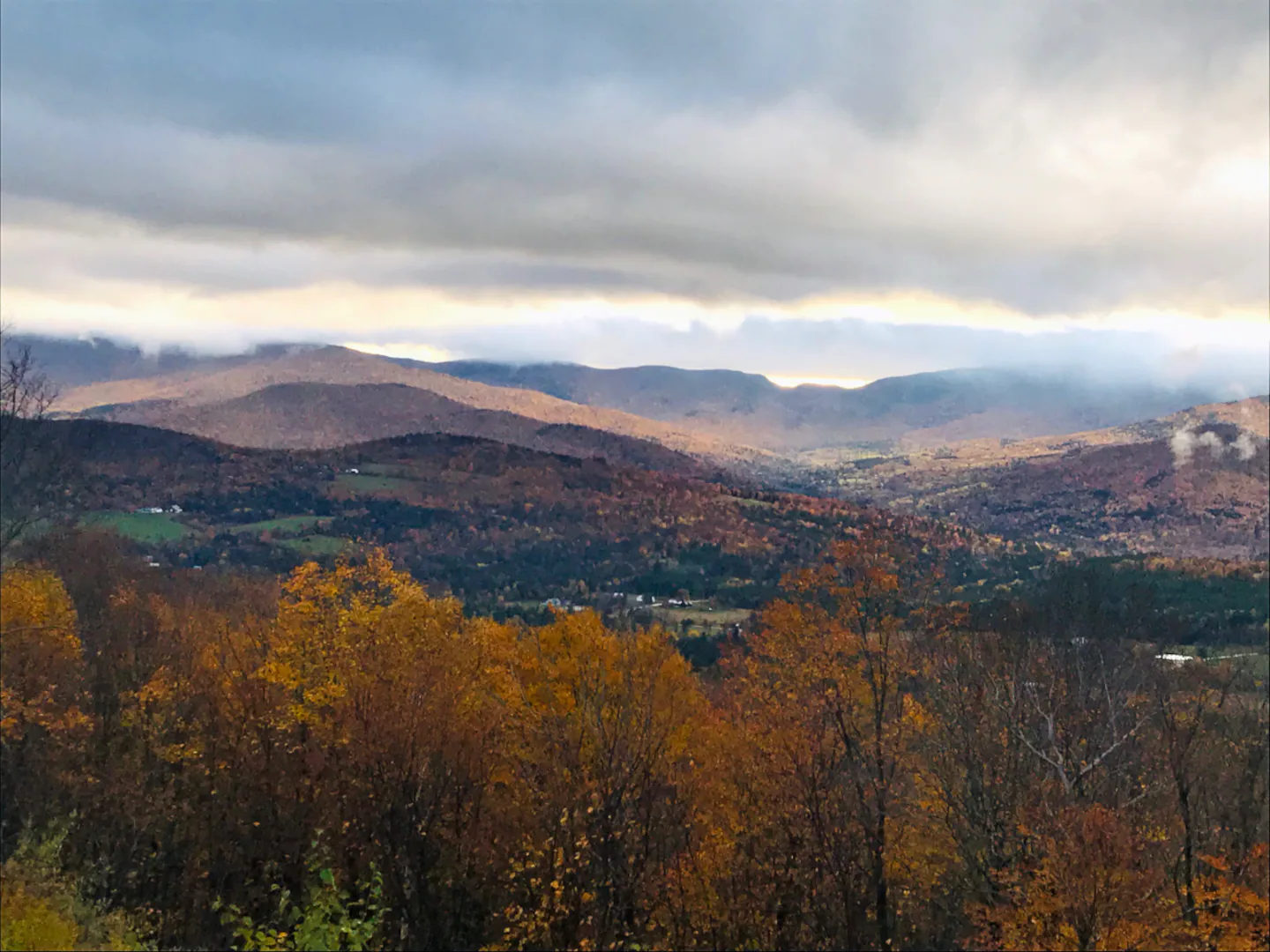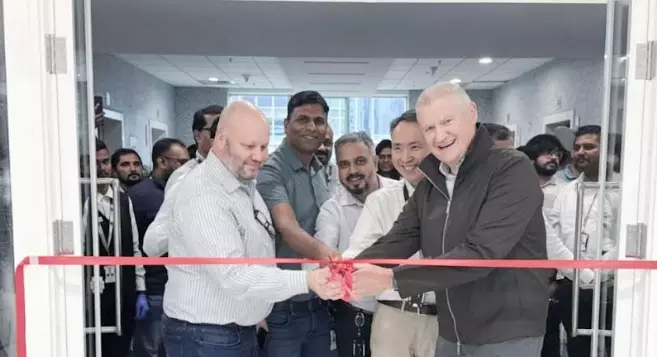
In February 2023, as cruise missiles hit cities from Kherson to Kyiv, Mikhail Rusin lost heat and electricity in his home in Ukraine’s capital for almost a week. Overnight lows were around 14 degrees Fahrenheit. It was yet another hardship of the war, and while he worried about himself and his family, he was also concerned about his hamsters at the Kyiv Zoo. The hamsters were in sparse cages in a dark room, hibernating. Despite being generally tolerant of the cold, if their body temperatures dropped too low, they might not recover.
Rusin, a 41-year-old biologist who heads up the zoo’s European hamster breeding program, just might be the biggest champion for these critically endangered rodents, which are native to 23 countries from France to Kazakhstan.
European hamsters are not to be confused with pet hamsters, which are native to Syria and Turkey. For one, they are much larger, weighing three times as much, and feistier. Imagine a pet hamster “but it’s the size of a guinea pig, with a really bad temper,” says Julie Fleitz, a hamster expert with the French National Centre for Scientific Research. When provoked, they’ll stand on their hind legs to fight. Not much scares them. “They can jump on dogs and other larger predators,” says Rusin.
But for all their tenaciousness, these hamsters struggle. The IUCN, which accesses the extinction risk status of animals around the globe, lists the European hamster as critically endangered. And in Ukraine, the species is in the Red Book, the country’s list of vulnerable and rare animals.
Because of their dwindling numbers, Rusin breeds the hamsters as part of the zoo’s conservation program and then releases them on the Tarutino Steppe, a large, open grassland in southwestern Ukraine near Odesa.
Remarkably, since 2020, Rusin has released hamsters every year—throughout the COVID-19 pandemic and then the war, which started in 2022. During the same time, Rusin has seen friends go off to fight and come back injured. He’s witnessed the debris of intercepted Russian drones hit the zoo. And he lost his income for half a year in 2022 when the zoo—still reeling from the effects of 2020’s dismal ticket sales—lost visitors again, along with the revenue they bring, due to the war.
THIS WEEK ONLY
And yet, through it all, he has continued his work with the hamsters. “Some people think that we are wasting resources now [on hamsters],” he says, rather than spending the conservation money on military drones. But he doesn’t see it as an either-or situation. Nor do the many hamster-saving volunteers he’s inspired. Amid the war, he says, “this is where I find my inner peace.”
The plight of Ukraine’s hamsters
Even without the wartime challenges, orchestrating a wild European hamster resurgence would be no easy feat. The Red Book notes that there are only a few thousand of the hamsters left in Ukraine.
They’ve populated the region since the last ice age, but by middle of the 20th Century, half a million were harvested each year for their fur. Then, monoculture, or the farming of single crops, robbed the hamsters of their food diversity, particularly in Eastern Ukraine. When the hamsters woke from yearly hibernation, they found plowed fields, nothing to eat, and few places to hide from predators. Nowadays, much of the habitat they had left there has been destroyed by war.
Their range, which once extended from France well into eastern Russia, has also decreased dramatically—by 94 percent in France, and by 74 percent in Germany, Poland, and Ukraine, says Fleitz. When the hamsters perish, the environment suffers. Hawks, foxes, polecats, and other predators rely on them for food.
In 2019, Rusin was asked to head up the breeding program at the Kyiv Zoo, after the zoo’s director heard about a similar program in Germany and wanted to replicate it. When the zoo reached out, Rusin was the only PhD in Ukraine focused on the hamster. Within a year, COVID-19 hit. That spring, “we had a lockdown, and it was forbidden to move through the city,” Rusin says. He had to obtain a government permit to go to work and feed the hamsters.
Then, two years later, Russia invaded Ukraine, expecting a quick victory. Instead, the war has raged for three years, with nearly one million Russian troops and half a million Ukrainian troops dead or wounded, according to the Center for Strategic and International Studies. More than 1,600 civilians have been killed across Ukraine. Russian missiles and drone strikes continue to target Kyiv, decimating infrastructure and killing civilians.
Rusin’s hamsters ended up surviving that brutal winter of 2023, even though their zoo building often lacked indoor heat. But the following summer, blackouts and stifling temperatures hit Kyiv, as more missiles rained down from Russian attacks. In early July, the Okhmatdyt children’s hospital was hit in a strike that decimated the ICU and the oncology and surgery units, injuring 10 children and killing two adults, including a doctor.
A kilometer away at the zoo, the scorching summer spelled disaster for the hamsters. “The facility that we had at the time was not prepared,” Rusin says. It was “without ventilation, without electricity, without air-conditioning working.” Temperatures soared to 90 degrees Fahrenheit on some days.
Many hamsters at the zoo became hyperthermic and died, so Rusin’s team transferred the survivors to a cool unfinished basement nearby until they were ready for release. But soon, Rusin’s team had to evacuate there, too, straining the hamsters’ little bodies further. “Hamsters are very prone to stress,” he says, “and several heart attacks occurred with the hamsters.” For Rusin, it was a heartbreaking blow—especially when he and his colleagues were taking such risks to conserve these species.
Every year, Rusin’s work grows more urgent. Many hamster populations have disappeared in eastern Ukraine, where most of the military action has occurred. “There were some cases of hamsters falling in the trenches,” Rusin says. “And then we had, for example, cases when the military hanged hamsters and other wild animals. People unfortunately are cruel very often, especially in the war.”
Fighting for hamsters on the homefront
Rusin hasn’t just been saving hamsters from the fallout of the war, he’s also been educating fellow Ukrainians to join in on the conservation efforts amid all their hardships.
In Western Ukraine, where the hamsters are relatively more plentiful, they have long been considered pests. There, families grow fruits like strawberries, and vegetables, Rusin explains. “It’s a feast for the hamsters,” creating “a huge tension.”
It can be hard to convince owners of these small farms or gardens to engage in conservation. “When we say ‘it’s a protected species,’ people [get] very angry, because, [they say] ‘Come on, they eat our food! We are not going to tolerate it!’” Often these farmers would tell Rusin “If you like hamsters so much, go and take them out of our field.”
So Rusin decided to do exactly that: relocate the hamsters somewhere safe. In 2023, he launched a side project, the Hamster Rescue Center, which teaches volunteers to capture wild hamsters in small gardens or on family farms. Rusin then collects them for release on the steppe.
Artur Shabliian is one of those volunteers. In addition to his work with the rescue center, he has his own veterinary practice and wildlife rescue in Horishni Plavni, a mining community in central Ukraine. He admits he didn’t think much of the European hamster until he started getting complaints from locals about rodents eating vegetables. (There had been a sudden population increase locally in the hamsters in the past year or two—what Rusin calls an “outbreak,” though scientists can’t explain why this happened.)
Shabliian contacted Rusin this past spring to help, and Rusin taught Shabliian how to safely catch the hamsters so they could be relocated. Currently Shabliian is treating two wounded wild hamsters in his volunteer clinic, both “injured by human hands,” he says, though he is hopeful for their rehabilitation and release. “I could not refuse to save such defenseless baby animals, because every life is important,” he writes in Ukrainian. “Wild animals are very vulnerable and suffer from people in peacetime, and even more so during war.”
“If not for me, who else?”
Today, Rusin spends a lot of time thinking about how he can save even more animals. He’s passionate about rodents like hamsters because he thinks conservation efforts for them are often overlooked in favor of more majestic, “fancy” animals like bears or elephants. As for why the hamster in particular? “First of all, they’re cute; isn’t it a good reason?” he asks. “The second reason—if not for me, who else?”
Breeding and releasing the animals is not simple work. Rusin says that not all the released hamsters survive, especially the captive-bred ones, with no experience in the wild. Many are eaten by predators like polecats and hawks. “With small animals, when you release 10, you will have just three surviving,” he explains, which isn’t enough to increase the population.
To increase the survival rates, Rusin, along with volunteers and groups like Rewilding Ukraine, digs burrows for the captive-bred releases and covers the burrows with something heavy—like a wooden block or bottle of dirt—so that the hamsters have time to acclimate to their new home before venturing out into the wild.
Aside from being eaten, another risk is that these feisty creatures will brawl amongst themselves. “You can’t put a lot of animals in a small area; they’re going to fight and kill each other,” Rusin says. Yet “if you release just one animal, it wouldn’t breed.”
Rusin’s efforts have attracted attention around Ukraine, in part through posts on social media. Viktor Ladynskyi, a husband and the father of 12-year-old twin daughters, became a Hamster Rescue Center volunteer after finding them on Facebook, and undergoing a change of heart.
“From an early age, I noticed that hamsters were quite cute, interesting animals, but at the same time … caused a lot of damage to agricultural lands,” Ladynskyi writes in Ukrainian, from his home in Tulova, a small town in western Ukraine at the foot of the Carpathian Mountains. In Ladynskyi’s community, it is not unusual for locals to poison the hamsters, flood their burrows, or trap and kill them. “Almost all the villagers did this,” he says.
Then, one day this past spring, he came across the Hamster Rescue Center on Facebook. He reached out to Rusin, who drove eight hours to Tulova, inspired by the hope he could save some hamsters’ lives. There, he taught Ladynskyi how to humanely trap and feed his community’s wild hamsters, and how to care for them until their release.
“My Ukraine is going through very difficult times,” Ladynskyi says. Many of his town’s men are away in the East fighting, including two of Ladynskyi’s nephews. Ladynskyi and his family have provided shelter at their home to 27 refugees from eastern Ukraine so far since the start of the war. Nevertheless, he feels compelled to help the hamsters, too. “People and animals are dying, forests are disappearing, fields are being devastated, rivers are being poisoned… It is even difficult to imagine and understand what terrible harm the war has actually caused to people, animals, and the entire environment.”
But fighting between humans should not prevent the saving of a species. “Despite this [trouble],” he says, “we continue to live, learn, and protect.”



